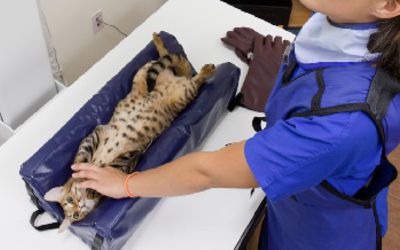
Veterinary radiography has advanced significantly over the years. Modern devices, coupled with progressive techniques, ensures that our furry pals receive the highest care available. One central advancement in this realm is the use of vet x-ray positioning aids. This guide delves deep into the realm of x-ray positioning aids, providing you a comprehensive look.
Understanding Vet X-ray Positioning Aids
Before diving into the nitty-gritty, let's first get the underlying concept. In simple terms, x-ray positioning aids assist veterinary professionals obtain the most precise images while making sure minuscule discomfort for the animal. They play a critical role in holding pets in the proper position, reducing movement, and guaranteeing consistent, high-quality results.
Why are X-ray Positioning Aids Imperative in Veterinary Practice?
Safety for Both Animal and Technician: Minimising animal movement is important during x-ray procedures. This not only guarantees clear images but also minimizes the risk of radiation exposure for both the animal and the technician.
Consistent Image Quality: Steadiness is key when it comes to x-rays. Vet x-ray positioning aids help in achieving that by making certain animals are held in the appropriate posture for clear images.
Reduction in Retakes: If a pet moves during the x-ray process, the chances are high that the images might surface hazy. Positioning aids markedly reduce such situations, leading to fewer retakes.
Popular Types of Vet X-ray Positioning Aids
Foam Positioners: These lightweight and durable positioners are ideal for supporting the animal's body parts during radiography. They arrive in various shapes and sizes designed to fit different animals and body parts.
Sandbags: They're superb for stabilizing and positioning. Their weight helps prevent movement during the x-ray operation.
Tape and Straps: These can be used to fasten limbs in place. They're gentle on the skin and can be adjusted based on the pet's comfort.
Immobilisation Devices: For pets that are exceptionally agitated, immobilisation devices can offer a safe way to hold them still during the x-ray procedure without causing any discomfort.
Selecting the Right X-ray Positioning Aids for Your Veterinary Clinic
With the range of aids on hand, choosing the suitable one might seem daunting. However, consider the following factors:
Type of Animals Treated: A clinic mainly handling with small pets might have different necessities than one coping with larger animals.
Frequency of Use: Robust positioning aids are a must for busy clinics.
Budget: While it's imperative not to sacrifice on quality, vet clinics also need to guarantee they're making economical decisions.
Tips for Using Vet X-ray Positioning Aids Efficiently
Training is Essential: Guarantee that all your staff are adequately trained in using the aids. This will guarantee the safety and comfort of the animals while achieving the best possible x-ray images.
Regular Maintenance: Like all equipment, vet x-ray positioning aids also wear down with time. Regularly check for wear and tear and substitute them when necessary.
Prioritise Comfort: While securing the flawless image is imperative, it's just as vital to ensure the animal's comfort. Always verify that any restraints or positioners used aren't causing any anguish to the animal.
Vet x-ray positioning aids have changed the field of veterinary radiography. They have not only guaranteed the generation of clear, high-quality images but have also played a significant role in boosting the safety and comfort of the pets undergoing the process. As veterinary specialists, it's our duty to make sure we're armed with the best tools and knowledge to offer our furry customers the best care available.
If you're in the market to upgrade your veterinary clinic with the newest x-ray positioning aids or want more information about them, visit xray4vets. Plunge into a world of advanced veterinary instruments and elevate the care you provide to your treasured animal patients.